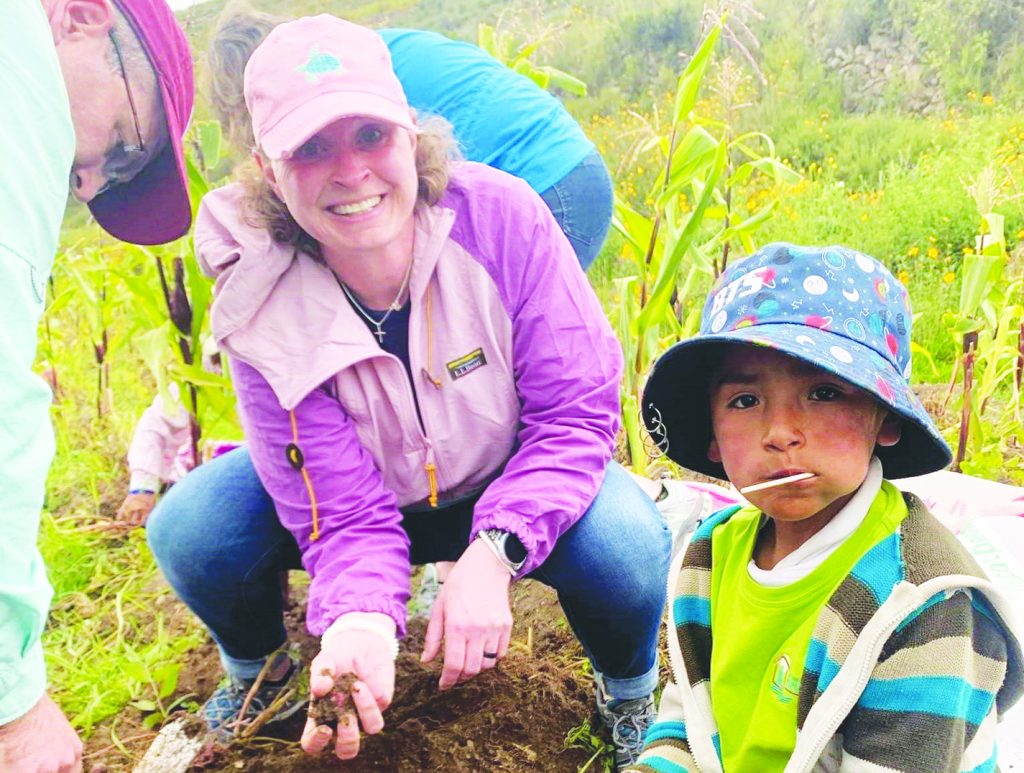
By Joshua Sweeney
In the summer of 2002, Amy Johnson was working as an EMT in between graduating from Virginia Tech and enrolling at Jefferson College of Health Sciences. She responded to a call on a farm outside Pilot where a farmer had been in an accident out in his fields.
It had taken six hours for his cries for help to be heard, and another hour passed before she and her team finally found the man, pinned between a fallen tractor and a hay cart.
She recognized him, a Hokie who had graduated with her just weeks before. Despite their best efforts, his injuries proved too severe, and he passed away that night.
The experience never left her, and years later, as she pursued a Doctorate of Nursing Practice at Radford University, she knew where to go for her doctoral capstone.
“I decided to meld the two worlds of agriculture and health care,” she said, “focused on farm injuries and farm safety. And that’s how the rest of my life began.”
Johnson grew up on her family farm in Highland County, giving her early hands-on experience with the agricultural world. Her interest in the field grew as she got older, and by high school, she was involved in livestock judging competitions through her local 4-H Club.
The experience solidified her passion for animal science, and Matthew Miller, then a graduate student in the animal science program at Virginia Tech and the coach of the Virginia Tech Livestock Judging Team, mentored her path to the program.
“It requires a tremendous amount of public speaking and quick decision-making. I watched her gain a lot of confidence over the course of the program,” Miller said. “Amy seized every opportunity for success and advancement and appreciated all the opportunities that livestock judging presented her.”
Now a Virginia Cooperative Extension agent, Miller kept in touch as Johnson started her studies at Virginia Tech, and he is currently her colleague at the Virginia Farm Bureau.
“He always expected the best from me, wouldn’t accept anything less,” Johnson said. “His support and his confidence were huge for me.”
At Virginia Tech, she saw similar support and guidance from her professors, who encouraged her to approach problems creatively and to attempt things that were out of the ordinary.
The summer before her sophomore year, the organization she was working for had a shortage of medical staff, and she began EMT courses. Returning to Virginia Tech, she joined the Christiansburg Rescue Squad where she stayed a member through graduation.
She pursued stints as a paramedic and both emergency room and forensic nursing while continuing her education at Jefferson College of Health Sciences and Radford University. “I always told my mom growing up, I was never going to be a nurse,” Johnson said. “And so I ate a lot of crow when I graduated, but I loved every minute of being a nurse.”
At each stop, however, she found she didn’t have the autonomy she felt she needed to optimally treat her patients. “I decided I was going to finish out with a terminal degree, to be able to provide the absolute best care to my patients,” she said.
While working on her capstone, she interacted with the Virginia Farm Bureau staff as she conducted her research. The bureau’s safety coordinator had recently left his position, and Johnson ended up giving his safety presentations to local farming communities.
After graduating with her doctorate, she quickly found work as a nurse practitioner, but she remained involved with the farm bureau. “I worked at the grassroots level to demonstrate to Virginia Farm Bureau the value of the safety programs, of having a dedicated safety coordinator within our organization,” she said.
Soon after joining the Virginia Farm Bureau, she met Megan Seibel, a faculty member and the inaugural director of the Virginia Agriculture Leaders Obtaining Results Program (VALOR) at Virginia Tech. Also a graduate of a nursing program before pursuing a doctoral degree in agricultural and Extension education, Seibel quickly became a mentor to Johnson.
As Johnson worked on her first safety initiatives for the farm bureau, she talked with Seibel about her goals and the steps she was taking to accomplish them. “It was exciting for me to have those conversations with her, seeing her develop and articulate her ideas for her data collection and research,” Seibel said.
Johnson’s work led to the creation of the Safety Advisory Committee, an organization that brings in members of the industry from around the state to develop an evolving safety program. These members go out into the community — sitting on task forces, presenting at conferences and meetings, and seeking training to improve the support they can offer local farmers. They also created a website that provides their farmers with guidelines, resources, news, and alerts to help them stay on top of their mental and physical wellness.

